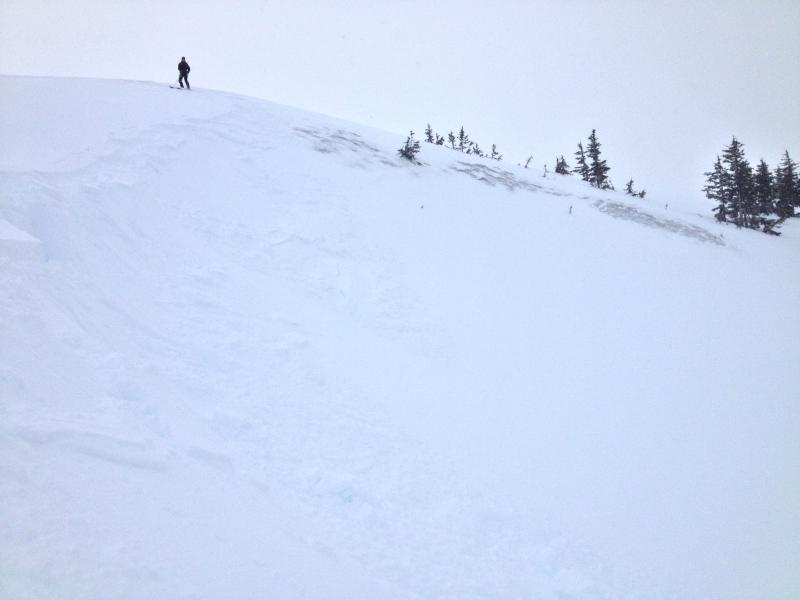Likely trigger points in the mountains include:
–Steep rollovers. Convex slope shapes have gravity working against the snow,
wanting to pull it apart. Introduce a person or snowmachine to the mix and snow
is more likely to slide.
–Exposed rocks, trees and vegetation. These spots can help the formation of
weak snow. They also often represent areas of the slab that are thinner. It is
rare for a slab, especially in wind exposed terrain to have uniform thickness.
When bare ground is visible, as in the photos, expect the slab to be thinner and
thus more likely to be reactive to triggers. Add into the mix a fairly uniform
weak layer(s) and large (>1 meter)slabs that are well connected to themselves
across large areas and you have a deep slab problem. On the flip side, areas where the slab is
very thick are less likely to be reactive because weaknesses are potentially
farther (deeper) away from the trigger. However, just because these thicker
spots are less likely to be reactive does not mean that they are necessarily
“more safe”.
Trigger points can be very challenging to assess. Sometimes they are obvious
(when they are easy to see). Things get tougher when these spots get buried
with just enough snow to conceal them but are still close enough to the surface
to be a problem. Knowledge or your terrain might help with this. When dealing
with deep slabs and any level of uncertainty, sticking to lower angled terrain
is your best bet.

